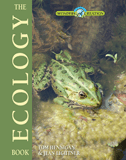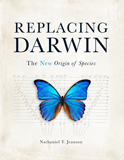The Great Species Mix-Up
The wild and woolly world of hybrids is setting evolutionary ideas back on their heels. Species simply don’t arise in the way the evolutionary tree proposes.
What do you get . . . when you cross a zebra with a horse? Give up? Why, a zorse, of course! How about crossing a polar bear and a grizzly? If you said “pizzly,” you’re catching on! Do you think I’m joking about these names? Guess again.
These are real examples of separate species that can breed and produce unique hybrid babies. Biologists have known about them for a long time, but until recently they thought hybrids were oddities. They usually observed these mixes in captivity, not in the wild—strange hybrids like the ones above or wholphins (mix of a bottlenose dolphin and a false killer whale) and geeps (mix of a goat and a sheep). New, inexpensive techniques of DNA analysis have now enabled scientists to test a variety of wild creatures, and they have discovered that hybridization seems to occur all the time in the wild.
This find is “challenging evolutionary theory,” Science journal admits in “Shaking Up the Tree of Life” (November 2016). Why such dramatic language for a normally reserved journal? For one thing, hybridization turns the concept of species upside down—and the origin of species is ground zero for evolution. Second, it turns the tree of life into spaghetti.
Creation scientists, on the other hand, are not ruffled. They have been fascinated with hybrids for decades, concluding that they point to a recent creation just a few thousand years ago. And they are excited by recent findings, believing they will help paint a clearer picture of how God filled the earth so quickly after the flood.
Upside-Down “Species”
Historically, evolutionary biologists have defined a species as a group of organisms unable to breed with other species. Species mating with other species was thought to be rare and either unimportant or damaging to their health. The current research refutes these ideas. It also highlights what biologists have known for a long time: the concept of species is ambiguous, and they have not been able to settle on a good definition to replace the historical one.
Consider two creatures that everyone “knows” are separate species: the camel and the llama. They live on different continents and inhabit different environments. In the evolutionary story, their ancestors separated from each other millions of years ago, and millions of generations have been born since then.
Yet when a llama from the high mountains of South America is artificially inseminated with a camel from the deserts of Africa, out pops a cama. The parents’ genes are so similar that they can produce viable offspring!

A dzo is the male hybrid of a yak and a domestic cow. Female hybrids are called dzomos. Fascinatingly, dzos are infertile, but dzomos can produce young. They’re also called yakows.
Do you see the problem? Camels and llamas are not just classified as different species but as different genera (the next higher level of classification). How could they still produce viable offspring after millions of years? Suddenly we have separate branches on Darwin’s tree connected to each other by hybridization.
Examples are endless (and cool to study). How about the lynx and bobcat? They are different cat species but readily hybridize along the Canada-USA border, producing fertile offspring.
And don’t forget your dog Rover! You might be surprised to know that he can have relationships with coyotes and wolves. In the case of the coyote living in the northeastern United States and Canada, DNA analysis has revealed that its genetic recipe consists of eastern wolf, coyote, and a dash of dog. Because of the new findings, it has been rechristened a coywolf.
Kind vs. Species
Though species is a useful term for scientific research, creationists prefer the term kinds to describe creatures that interbreed.
The Bible sheds light on why it is difficult to classify species and why different species can often form hybrids. Genesis 1 tells us that God created creatures “according to their kinds” and blessed them to reproduce and fill the earth. Though species is a useful term for scientific research, creationists prefer the term kinds to describe creatures that interbreed. God used this term millennia before modern genetics.
The Hebrew word for “kind” is min. It first appears in the Bible’s account of God’s six-day creation, and the term later appears in the account of animals brought aboard the ark to refill the earth after the flood (Genesis 1–11). Modern creationists believe creatures that can interbreed and produce offspring have all descended from the same biblical kind.
Bears are my favorite example. Currently, eight bear species roam the forests of North America, South America, Europe, and Asia (and another species lived in Africa until its recent extinction). Most readily hybridize with each other, even though thousands of miles may separate their native populations. When you see a bear, you just know it is a bear.
Though pizzlies and grolar bears are known, new genetic studies reveal that Alaskan brown bears likewise have polar bear DNA in every cell. This illustrates the difference between species and kinds and that polar bears and brown bears can freely mix.
So we understand that all bears came from a single kind on the ark, and we can see from science how they filled the earth after the flood, as their Maker intended. Since this has taken place over thousands of years, they still are compatible enough to produce offspring with each other.
All species of bears are members of the same family, Ursidae. The same is true within the camel, cat, and dog kinds. So creationists typically place a kind around the family level, though in some cases the classification may be above or below the family. Unlike the quandaries of secular evolution, it’s easy to explain hybrids if they descended in just a few thousand years from the same stock on the ark.

Today’s big cats, except for snow leopards, can all hybridize with one another (lions, tigers, leopards, and jaguars). In the case of leopards and jaguars, if the jaguar is male, the hybrid is called a jagulep. If the leopard is male, the hybrid is a lepjag. Female hybrids tend to be fertile, while males do not.
A Tangled Tree
Secular scientists have run into another tangled mess because of their unbiblical assumption: the tree of life. They believe the plethora of life descended over billions of years from an original single-celled ancestor. They believe as organisms evolved new traits by random mutation, genetic variation increased. Then natural selection eliminated the unfit. To produce the tree of life from a single cell, species must quickly separate into independent branches that stop sharing genetic information. Otherwise, we would not see vast distinctions at higher taxonomic levels.
Historically it was assumed that when a new species arose (speciation), the descendants of this newcomer would soon be incapable of producing offspring with others in the genus or family.
Yet I’ve already listed many counterexamples. Another striking example is lions and tigers, which produce tigons and ligers. Even in the plant world, different species of pine trees all over the world can hybridize. Even more impressive, the tanzanite orchid blends from three different genera of orchids. Any way you mix them, they show that the “tree of life” has become tangled spaghetti.
Evolutionary Perspective on the Origin of Species
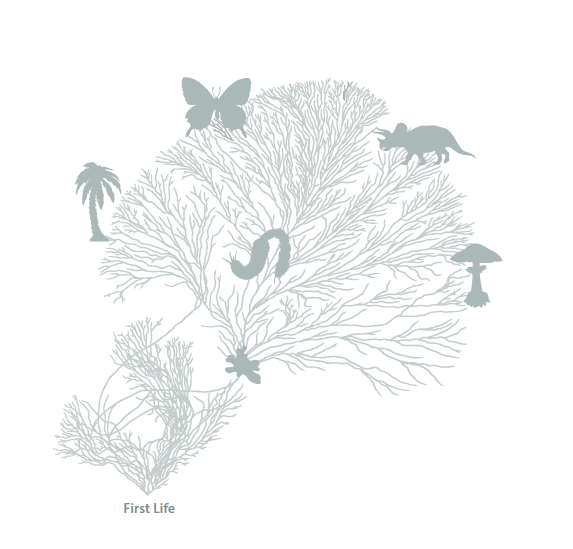
Chance processes produced the first living cell around four billion years ago. Over millions of years, random mutations increased genetic diversity and led to new species on a single “tree of life.” Over time, each species lost the ability to produce hybrids with other species.
Creation Orchard
The creation-based view of life avoids these problems. Creationists have never been hampered by the need to explain why similar creatures can hybridize. They would expect this, since the Bible clearly reveals that all living plants and animals came from the same set of kinds which survived the flood not long ago.
Picture an orchard where each tree represents a different biblical kind. These trees are not related to each other, but branches on individual trees represent variations within the same kind. Each kind is a masterpiece of design, containing immense genetic diversity and potential. It looks as if God gave organisms a treasure trove of diverse and potential traits—like a Swiss Army knife—that allowed them to respond to changing needs with specialized tools. So within a kind, one animal might have white fur for the Arctic while another has padded feet to traverse hot desert sands.
Creationist Perspective on the Origin of Species
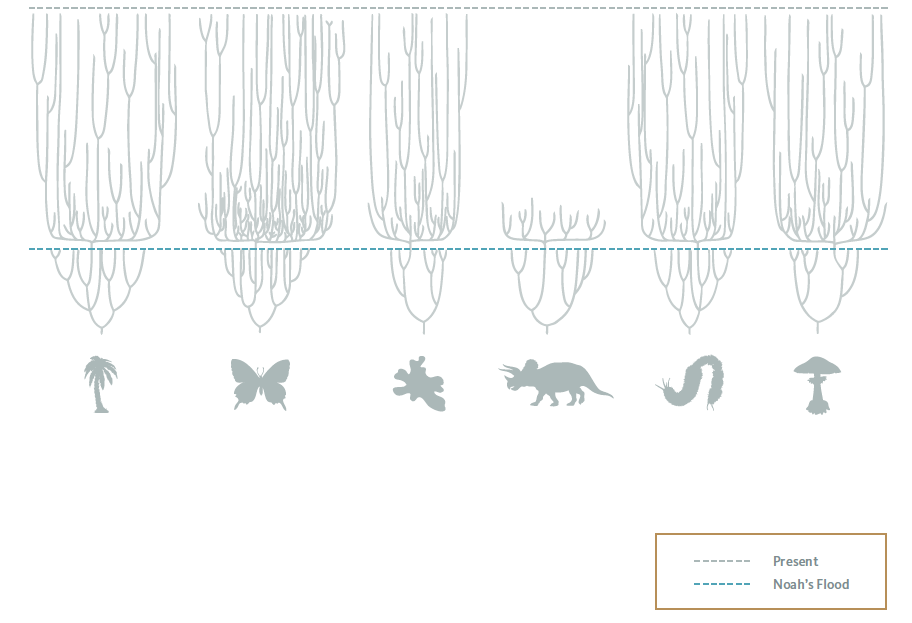
God created every “kind” of creature around 6,000 years ago. From the beginning, each “kind” had the genetic diversity and potential necessary to produce new species quickly. These species belong to independent families in an “orchard,” often retaining the ability to produce hybrids within a family.
Natural selection could potentially fine-tune these traits by removing those that are less useful in a particular environment, but it wouldn’t produce them from scratch. The Master Designer made sure that each kind of creature had the diversity and flexibility to respond to post-flood climate extremes and draw from their tool kit accordingly.
The Bible paints a very different picture of controlled change in nature. Within each kind, or “orchard tree,” immense variety is possible, but this variety stays within the tree.
So the Bible paints a very different picture of controlled change in nature. Within each kind, or “orchard tree,” immense variety is possible, but this variety stays within the tree. None of it is inherited from other trees. Each has its own toolkit—its own set of genes—and limited range of variability.
Creationists have developed a unique approach to classifying animals and plants, called baraminology (the study of biblical kinds). They look at hybridization, similarities (continuities), and differences (discontinuities). Because they do not believe in universal common ancestry, they search for significant unbridgeable gaps (discontinuities) that separate each created kind.
Rapid Diversification Within a Kind
If the flood took place about 4,500 years ago, then diversification within kinds must be much more recent than conventional scientists assume. Furthermore, it must also have been really fast! Although speciation occurs rapidly in some cases today, such as among the cichlid fish in Africa’s Lake Victoria, the high-velocity speciation necessary to yield both camels and llamas from the same stock in only a few centuries is surprising.
Rapid diversification has been a challenge for creation biologists to explain with what little has been known about genetics. We’re not just talking about the origin of all the living species of camels and llamas, but also dozens of fossil species that appeared soon after the flood and then went extinct.
Historically, the creationist’s perspective looked foolish if a person assumed it took millions of years for random mutations to produce new species. But if species hybridize much more often than previously expected, this can create new combinations in just one generation. At least one researcher, Chris Thomas, thinks that speciation events produced by hybridization may happen over 1000 times faster than other processes historically proposed by evolutionists (Inheritors of the Earth: How Nature Is Thriving in an Age of Extinction, 2017, p. 22).
Big Bird in the Tanager Kind
To understand how rapidly hybridization can produce changes, you need to know about another process known as introgression. This happens when a hybrid produces its own offspring, which then mates back with one of its parent species, producing babies with both hybrid and parent DNA. New mixes can be produced at much faster rates because of these processes. In some cases, depending on which definition of species you use, these new mixes can gain the label species.
Consider a “big bird” which has made a splash in the Galapagos Islands. It may be the best example of rapid speciation today. This species is the hybrid offspring of a cactus finch and a medium ground finch. With a weight of 1 oz. (28 g) the “big” in “big bird” is a bit of an overstatement, but this burly “finch” outweighs its mixed parents by almost 40% and sports an oversized head.
Despite their famous name, Darwin’s finches are actually in the tanager family (Thraupidae), not the finch family, and consist of about 15 species. Detailed DNA analysis of the tanager kind, published in 2015, shows that introgression and hybridization is happening more often and more rapidly than anyone thought possible. Such data are consistent with creationist assumptions.
Further complicating the picture, members of the sparrow family can hybridize with members of the finch and tanager families, suggesting that—at least with these birds—the kind is above the family. This rapid speciation has also been measured in both the animal and plant worlds, including ducks/geese, woodpeckers, hawks, sparrows, hummingbirds, oaks, maples, and grasses, to name just a few.
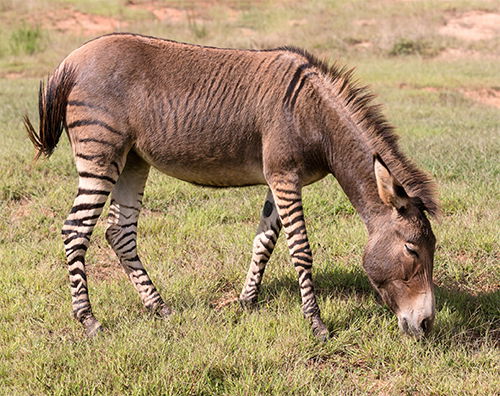
A zedonk is the product of a female zebra and male donkey. If the male and female were reversed, it would be a zonkey. Any zebra combination with another horse species, including zorses and zebmules, is called a zebroid.
God Provides for His Creation
What does all this mean? God is the
provider, as memorably expressed in
Philippians 4:19: “My God will supply
every need of yours according to his
riches in glory in Christ Jesus.
” God
provides for his creatures too (see
Psalm 145:15; Luke 12:24).
God’s provision makes sense because God is love. Recent scientific findings are giving us a glimpse into how creatures might have flourished even after the cataclysmic destruction of the worldwide flood. It is amazing to see how animals in all their wonderful variety have persisted since creation, reflecting God’s nature as Jehovah Jireh (“the Lord will provide”).
If he did that for creatures that are not made in his image, how much more must he have provided for us! Not only has he designed his world to provide humankind with food, water, shelter, and resources, he has provided for our salvation.
Death and suffering were not always a part of our world. They entered because Adam declared independence from God. His sin brought great strife and loss to all God’s creatures. But God never stopped providing—never stopped equipping us to survive in this cursed world (Genesis 3).
Our Creator knew we could never be in right relationship with him on our own terms. But his love knows no bounds, so he miraculously became one of us and dwelt among us (John 1:14). As the God-Man, Jesus provided a way to God that we could never have blazed ourselves. He became one of us and took the penalty for mankind’s sins, so that we wouldn’t have to suffer it ourselves. What he asks in return is our surrender and love.
As you marvel at the way species change to survive in a dangerous world and how current evidence supports creation research over the last 100 years, never forget the main truth. It is our Creator who gave us the ability to learn about him and his ways and who loved us enough to provide the essential tools to live an abundant life with him, both now and forever.
Answers Magazine
November–December 2017
Dr. John Whitcomb explains the timeless truths that will help us reach the next generation with God’s message of redemption.
Browse Issue SubscribeRecommended Resources

Answers in Genesis is an apologetics ministry, dedicated to helping Christians defend their faith and proclaim the good news of Jesus Christ.
- Customer Service 800.778.3390
- © 2024 Answers in Genesis





